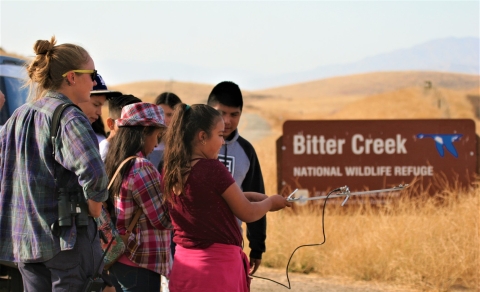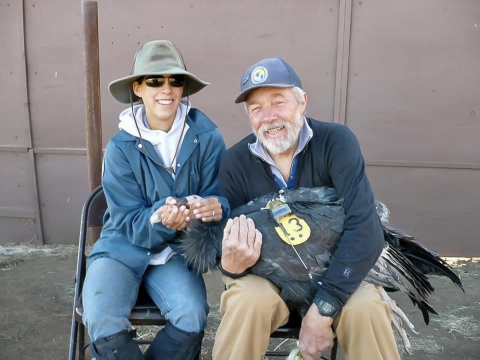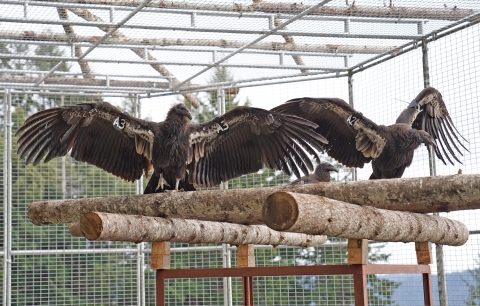What We Do
The program includes several key components including addressing threats to the species in the wild; captive breeding; and release and monitoring at our field sites. In addition, our program includes ongoing research and education and outreach.
Captive Breeding
Meet our Captive Breeding Partners
(Links do not imply endorsement)
Reintroduction and Monitoring
The Recovery Program began releasing captive reared condors back into the wild in 1992. The first releases were conducted in Southern California. Initially California condors were released with Andean condors to create a larger “family” group. The Andean condor portion of the release program was discontinued in September 1992.
There have been many lessons learned in the best approach to release condors since the program first began. Currently the six partners operate release sites. Field teams operate under permits issued by the Service to conduct the recovery activities. Recovery activities include releasing captive reared condors into the wild, monitoring the free-flying birds, providing supplemental food, conducting annual health checks, monitoring nesting activity, and more. Field teams monitor the individual condors using very high frequency (VHF) antennae and Global Positioning System (GPS) units.
California Condor Numbering System
We often receive questions regarding the names (or ID's) of California condors. "What's that one's name?" "What language is it and what does it mean?" "Why did the one I saw have a number?"
In the California Condor Recovery Program, each condor is assigned a name or identification number - the "studbook number." Biologists need a way to identify individual birds to keep track of medical histories and behavioral patterns. Those familiar with condors know that some condors have a name like AC-7 or AC-9. These were some of the field identifications used in the 1980's to study and monitor individual condors in the early years of the recovery program.
The AC in those names stands for Adult Condor and the number indicates the order in which each bird received identification. For example, AC-7 means "Adult Condor #7", the seventh condor to be given wing tags and a radio transmitter.
But regardless of whether a condor is known by a name or a number at any particular breeding facility or release site, all condors are given a studbook number. This identification number supersedes any local names or IDs by which the bird may be known and it allows biologists and researchers to ensure accurate historical recordkeeping regarding individual birds.
The studbook keeper assigns the studbook number when they first receive all of the current year's breeding information on all newly hatched birds from all of the breeding facilities and release sites.
The numbers are issued chronologically; so the larger number indicates a younger bird. When you see a condor flying in the wild, look for the number printed on its wing tags.
The number will either be the last one or two digits of its studbook number. For example, a wing tag that reads "19" will indicate that the bird is either Condor #19, #119, #219, #319, or #419. The color of the tag determines whether the number is in the 200, 300 or 400 series, and so on.
Meet our Field Team Partners
(Links do not imply endorsement)
Hopper Mountain National Wildlife Refuge Complex, U.S. Fish and Wildlife Service – operating out of Bitter Creek National Wildlife Refuge and Hopper Mountain Refuge in Southern California.
Pinnacles National Park – joined the program as a release and management site in 2003 and operates in Central California.
The Northern California Condor Recovery Program (Yurok Tribe and Redwoods National and State Park) – began releasing birds in 2022 and operates out of Redwoods National and State Park.
The Peregrine Fund – began releasing birds in 1996 and operates from Vermillion Cliffs National Monument, Arizona.
Ventana Wildlife Society – began releasing birds in 1997 and operates in Central California.
National Commission of Natural Protected Areas Mexico – established in 1999, our partners in Mexico began releasing birds in 2002 in Sierra de San Pedro Mártir National Park, Baja California.






